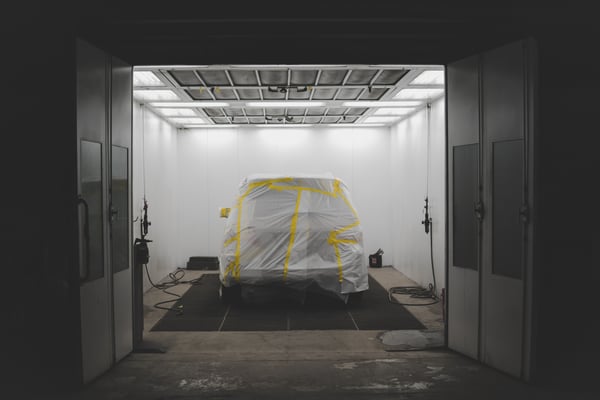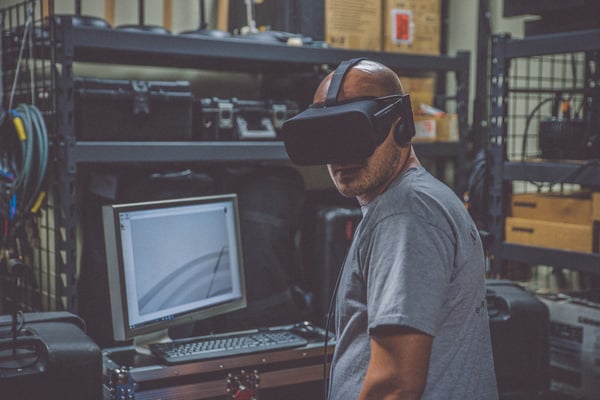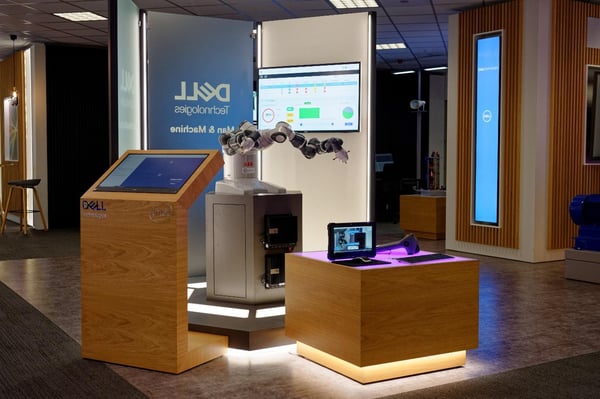1st January 2018
8:30am – 12:00pm
Science Museum, London
I know not all of us will live and breathe our 5-year plan for sustainability and growth on a daily basis. As it stands it is probably more of a management team framework to help grow the business and provide opportunities to all in it. Obviously, we are also in the business of being successful and making profit. I have realised that we need to distil down our 5 year plan a bit and make it more digestible in terms of what we are trying to achieve quarter on quarter, year on year. Hopefully that will then give all of us some alignment between what we do on a daily basis and the impact of that on the 5-year plan. And ultimately for all of us individually, what does it mean for me.
Some of you will be aware that the management team have had a development session over the past few days looking at what we need to do and how we develop things for all. Nick, Julian and I did some training with Neil Dixon https://www.linkedin.com/in/neil-dixon-3a6a379/ sometime back so we have him back in with us to help give some objective views on where we are now, where we are going and how we get there. A bit of navel gazing!
The planning of business is not always straight-line stuff. There is invariably curve balls, choppy seas, stormy weather or whatever other description we choose, to challenge us and make us think. One thing is constant however and that is that we need to have a plan. It doesn’t have to be rigid, we don’t have to be slaves to it, but without it we don’t have a baseline to measure where we are, what we are doing good, where we need to change and develop. So, 7 quarters into our 20-quarter plan, where are we?
In short, we are behind plan in terms of numbers that we were aspiring to achieve but in real terms there is a growing confidence in the foundations we now have in place, the processes we have developed and the teams that are in place. The move to subscription business has been a longer and more impactful event that what I and Julian estimated, however what we can now see is the benefits of that move, being reflected in the numbers and growth out into next year and the year after. The core business of CAD & PLM still has huge potential in it, and we are also seeing growing income through the IoT & AR channel.
We need to digest some of the details from the few days with Neil, but I will commit here to providing an update on our plans and what they look like. I have mentioned in the past that my own view and opinion is that people and the teams is what makes things happen, so in line with the management team looking at how things are doing, I’d encourage you to do the same with your manager. I played a lot of field sports over my younger years and the fun excitement of being part of winning team is far greater than being part of a losing one. The respective emotions of frustration or pride experienced in seeing a team member not care or bust a gut, for me transfers 100% into the workplace, so the more we can build good teams the more we can achieve.
Thanks to all that contributed this month and others, it is good to talk!
When I was approached to write this article, my first thought was where do I start and what do I write about. So, I thought why are processes important? They are important because they provide a framework to describe how things are done and ensure that there is a common approach to what we do.
As we have currently been looking at ways to be more efficient and improve customer experience it is important to understand how things were done and what was the end outcome.
In other words, when you are looking for a different outcome, think about what you do and change it. Too often we think about the detail. We look at the activity we are involved with and try to find a better way of being more efficient. We may indeed be more efficient if we keep the stapler on the right-hand side of the desk or arrange the furniture better. In the office world, the ‘what you do’ should be broader than the activity, the document, the technology.
It is important that the organisation should focus on the sum of all these and how they flow together in complete business processes.
Of-course the 'different outcome' we all crave is a business that is more efficient, and improves customer service, so a business process will therefore cut across the whole organisation and does not focus on the individual department.
For example if for a moment look at the world of manufacturing: If the final sub-process is to move a car in to the paint shop and the paint shop can only handle 5 cars per day, there is little point in having 10 cars per day ready to be painted. This principle applies as much to work in the office as it does to manufacturing.

1. The People
Having the right people, motivated and performing is naturally a key requirement.
2. The Technology
Ensuring the processes work alongside available tools to assist in doing jobs well is also vitally important, processes should be software neutral so as not tie the company into to specific applications.
3. The Process
This is what holds it all together, the glue between the assets. It should be simple for people to follow and ensure that there are the necessary checks and balances along the way to ensure the correct end result. It should not be labour intensive, if you have to force a process then the chances of achieving the best journey will be fraught with difficulties.
The best processes are the ones that although they exist and people are following them, they are pretty much invisible in the day to day activity, but the end result is the same from everyone so customers have the same experience regardless of the point of contact...
So, as food for thought, I would like to leave you with a quote from W. Edwards Deming: “If you can’t describe what you are doing as a process, you don’t know what you’re doing.”
What does it do for us? It provides a better insight into and control over products, systems and our lives that would generally be beyond normal internet-based devices.
It allows businesses to monitor and streamline processes, reduce downtime and produce at faster rates.
Augmented Reality provides a front end to the ‘Internet of Things’ displaying information to us, quicker, in a 3D augmented environment on everyone’s readily available device, their mobile, and many other visual display units.
But AR does not need to be ‘connected’ to be useful. By using the bread and butter of engineering companies existing CAD data, AR gives us the ability to create interactive instruction manuals, demonstrate maintenance procedures and even simply showcase product features for marketing purposes. The possibilities are vast, subjective and open to our imaginations.
There is the craze of keeping healthy and on your feet, introducing the Smart Connected Human, we are not too sure on the Smart bit but are definitely there with the Connected bit. Prime example in our office with Lee’s latest addition of a Fitbit tracker… how many steps is it today Lee?
Moving on we should keep a watch out for Atif walking round with something on his head and walking into walls or giving himself verbal commands…

As IoT is a broad concept, it allows broad possibilities, and with that - interest from all industry verticals; from manufacturing, to beauty care, to medical equipment.
There is a keen interest by many companies to get ahead of the game and implement this technology into their working world before their competitors. Why? Analysts say that by 2025 there will be more lines of communication between devices than between humans.
In the past 2 years we have created proof of concepts for over 20 companies and have implemented further work in product delivery for many others.
Who have we been successful with then?
Mettis Aerospace – Developing a factory utilisation system that informs management of operational usage for their multiple shop floor presses. This provides real-time information for decisions to be made about historical performance straight to the desks of everyone within the business. This started off as a Proof of Concept which they accepted and is now in production. Even better, we have a further 3 projects lined up with them over the next few months to provide even more value with layers of connectivity and AR in a heavy industrial environment.
Boltight - One of the first companies in Europe to invest with PTC’s Vuforia Studio have been primarily creating experiences for exhibitions, and the results have been brilliant. During training last week, they made their first installation assistance experience and have a strong vision moving forward with divisions from across the globe.
Smart Factory – They are already on the IoT ladder but have been coming to us for the creation of dashboards and data screens to get useful information around the operation of P&G’s production lines.
DELL – A really existing partnership here between DELL, ABB and Honeycomb. Going live in one of their global experience centres, the release of an IoT & AR experience providing live operational information right in front of you. You see the robot move and straight away real time information appears on both the AR experience and big screen dashboard.

This is soon to be copied to various global locations with our branding.
The most recent investment into the AR world, Dromone. With a mindset to eliminate paper based operating manuals for diggers and excavators, Dromone intends to use the power of AR to assist users in operating machinery correctly and carefully with a more life-like virtual operation guide.
I know it seems like Owen, Atif and Andrew are in their own little world, but we are dealing with the big real world and making great strides and breaking new ground every week. We invite everyone to come and talk to us about ideas and learn more about it.
Time flies when you’re selling CAD – or so it seems anyway. I’m 3 months into my time at Concurrent and I don’t know where the time has gone. Personally, I’d attribute this to the fast-paced industry, constant learning and the enjoyable work environment.
I’ve worked in Sales for most of my working life. That being said, at 23 years old that isn’t a particularly long time. It’s been somewhat of a rollercoaster and I’m consistently surprised by how much it pushes me to learn and grow as a person and help me in other facets of my life. I’m a big advocate of self-reflection and improvement and believe there’s no better way to do that than being pushed outside of your comfort zone – and Sales has certainly provided that.
Concurrent’s way of working works for the way I work (try and say that 5 times over). I’ve never been very good at the hard-selling, wheeler-dealer type of sales. Concurrent’s solution-orientated, intelligent way of working with customers has enlightened me to a more professional way of approaching Sales.
Having spent the first portion of my life in Glasgow and most of it in Worcester, I’ll still always consider myself Scottish. To put it in perspective for you, I’ll always support Scotland in the footie but won’t cheer when England lose.
Outside of work you’ll likely find me with a Cider in hand or going for a jog – rarely simultaneously. I’m a massive fan of Drum and Bass (much to the distaste of my 5 housemates). I love to travel. Most importantly I like to spend time with my friends and family. It’s only upon finishing this paragraph that I realised I am a walking stereotype of a 23-year-old lad.
I hope that gives you a decent scope of me as a person but if it doesn’t – just ask! Here’s to the next 3 months.

16th – Julian
12th – Matt B
18th - Owen
12th - Karen
| Thursday 19th December
From 3 pm onwards |




